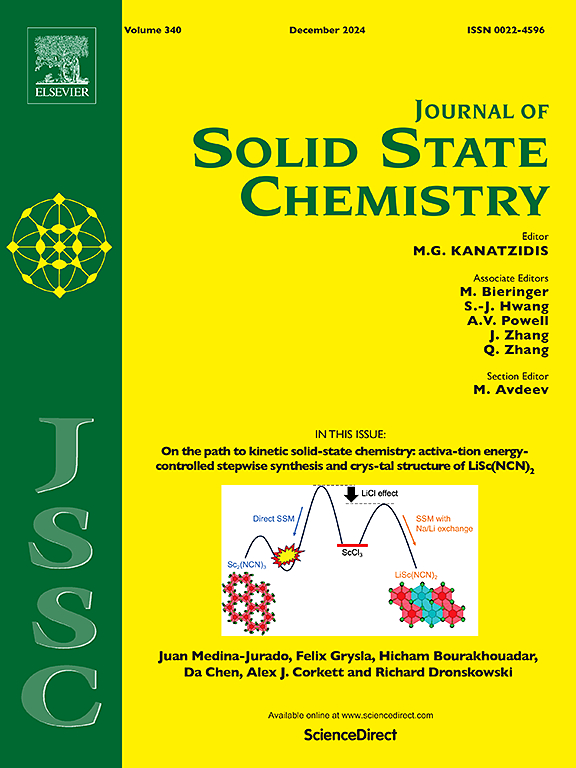Co3O4@C nanocomposites derived from the thermal decomposition of Co-based metal-organic frameworks for lithium storage
IF 3.2
3区 化学
Q2 CHEMISTRY, INORGANIC & NUCLEAR
引用次数: 0
Abstract
To address the homogeneous dispersion in the preparation process of transition metal oxides and to overcome significant volume expansion issues during charging and discharging in lithium-ion batteries, thermal decomposition of metal-organic frameworks (MOFs) emerges as a promising approach for obtaining carbon-supported composite nanomaterials comprising transition metal oxides. Herein, a Co-based MOF, namely Co6(TBA)4(H+)2(H2O)2(Py) (Co-TBA) was fabricated from hydrothermal synthesis with Co(NO3)2·6H2O and 4,4′,4″-s-triazine-2,4,6-tricarbonic acid (TBA) as starting materials. Subsequently, homogenous thermal decomposition of Co-TBA was performed to obtain Co3O4@C nanocomposites. The resulting Co3O4@C nanomaterials exhibited approximately a sixteen-fold increase in discharge specific capacity (777.5 mAh g−1) during cycling tests at a high current density of 1.0 A g−1 compared to that of Co-TBA (47.4 mAh g−1). The galvanostatic intermittent titration technique revealed that Co3O4@C exhibited significantly enhanced ion diffusion rates (10−10-10−13) compared to Co-TBA (10−14-10−17). Moreover, the Co3O4@C nanocomposite exhibits the hybrid supercapacitor-battery behavior confirmed by the analysis results of cyclic voltammetry kinetic analysis.

求助全文
约1分钟内获得全文
求助全文
来源期刊

Journal of Solid State Chemistry
化学-无机化学与核化学
CiteScore
6.00
自引率
9.10%
发文量
848
审稿时长
25 days
期刊介绍:
Covering major developments in the field of solid state chemistry and related areas such as ceramics and amorphous materials, the Journal of Solid State Chemistry features studies of chemical, structural, thermodynamic, electronic, magnetic, and optical properties and processes in solids.
 求助内容:
求助内容: 应助结果提醒方式:
应助结果提醒方式:


